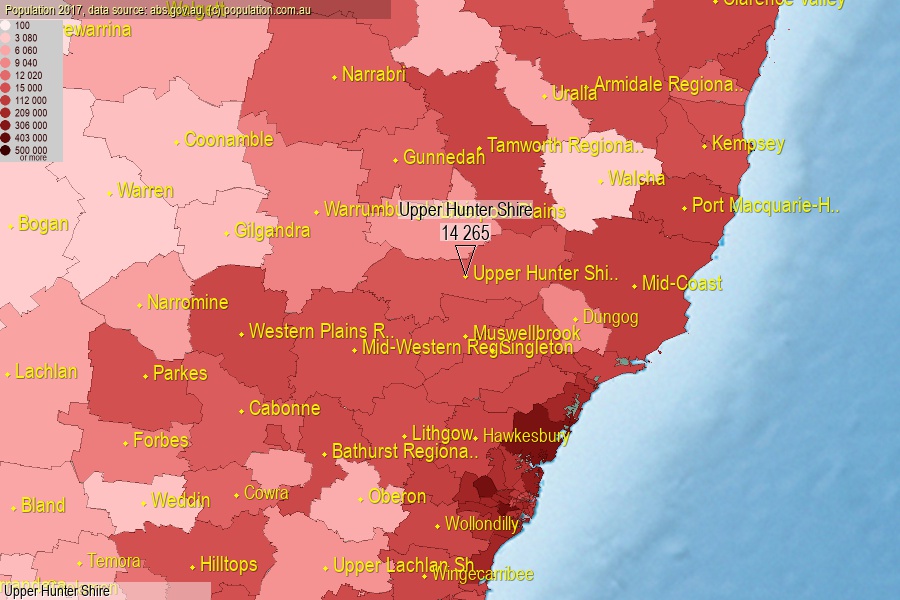 population.com.au
population.com.auLast official estimated population of Upper Hunter Shire Area (as Local Government Area) was 14 265 people (on 2017-06-30)[2]. This was 0.06% of total Australian population and 0.179% of NSW population. Area of Upper Hunter Shire is 8 096.10 km², in this year population density was 1.76 p/km² . If population growth rate would be same as in period 2016-2017 (-0.55%/yr), Upper Hunter Shire population in 2025 would be 13 648. [0]



Click to enlarge. Upper Hunter Shire is located in the center of the images.
Population [people], population density [p./km²] and population change [%/year] [2]
[1996-2001] +0.00 %/Y
[2001-2002] -0.11 %/Y
[2002-2003] -0.60 %/Y
[2003-2004] -0.75 %/Y
[2004-2005] +0.35 %/Y
[2005-2006] +0.39 %/Y
[2006-2007] +0.31 %/Y
[2007-2008] +1.68 %/Y
[2008-2009] +1.49 %/Y
[2009-2010] +1.32 %/Y
[2010-2011] +1.59 %/Y
[2011-2012] +1.28 %/Y
[2012-2013] +0.88 %/Y
[2013-2014] -0.04 %/Y
[2014-2015] -0.66 %/Y
[2015-2016] -0.47 %/Y
[2016-2017] -0.55 %/Y
[0] Calculated with linear interpolation from officially estimated population
[1] Read more about LGA and Australian Statistical Geography Standard (ASGS) on abs.gov.au
[2] Population data from Australian Bureau of Statistics (Population and density: 2017; change: 2016-2017)
[3] Digital Boundaries: Australian Statistical Geography Standard (ASGS) 2016.